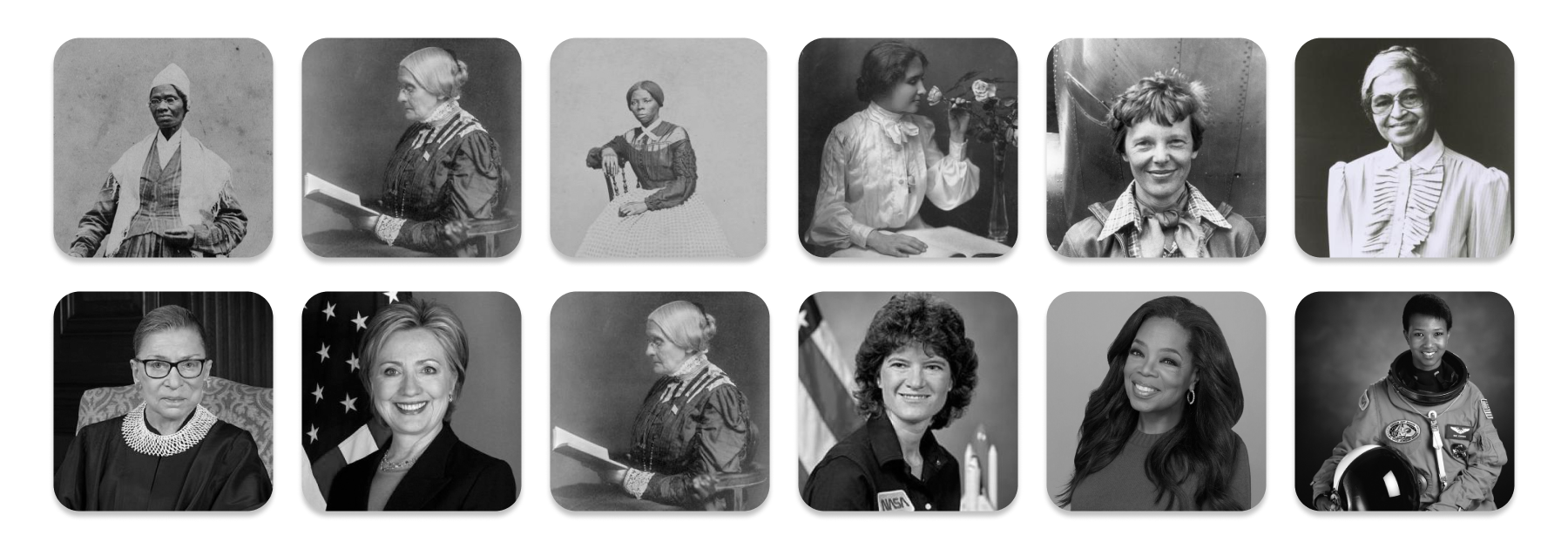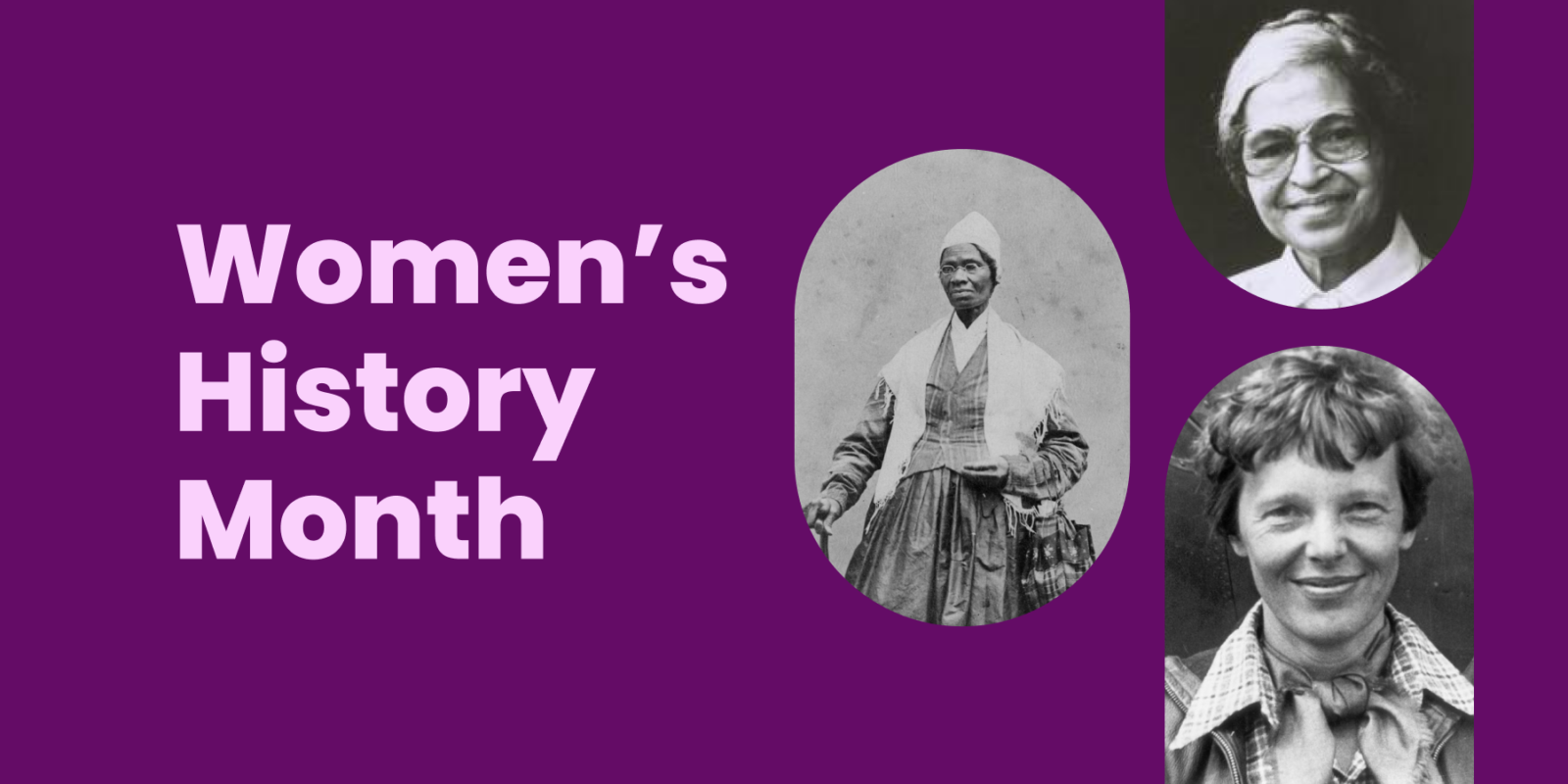History often neglects to tell the stories of women who, if they were men, would be celebrated household names. National Women’s History Month is a time to reflect on the amazing women who’ve made a difference in the world and learn about their incredible achievements.
Women’s history is, for obvious reasons, as old as time itself. However, to keep it nice and short, we’ll focus on ten key moments that shaped women’s history in America.
10 key moments in American Women’s History
- 1848: The Seneca Falls Convention, the first women’s rights convention, is held in New York.
- 1920: The 19th Amendment to the Constitution is passed, giving women the right to vote.
- 1963: The Equal Pay Act is passed, making it illegal to pay women less than men for the same work.
- 1969: The National Organization for Women (NOW) is founded to fight for women’s rights.
- 1977: The first National Women’s Conference is held in Houston, Texas.
- 1982: The first woman, Sandra Day O’Connor, is appointed to the Supreme Court of the United States.
- 1983: Sally Ride becomes the first American woman in space.
- 1992: The Year of the Woman, with a record number of women elected to the U.S. Congress.
- 2009: Barack Obama becomes the first U.S. president to appoint two women to the U.S. Supreme Court. Judge Sonia Sotomayor and Solicitor General Elena Kagan.
- 2020: Kamala Harris becomes the first woman to be elected Vice President of the United States.
Just as it’s impossible to reduce a rich and diverse history down to ten key moments, it’s an equally impossible task to produce a list of inspirational historical women that ends. So, for the sake of brevity, let’s focus on twelve American women who are, or were, trailblazers and role models, who inspire and lead, and have made their mark on history.

12 inspirational American women
- Sojourner Truth: African American abolitionist and women’s rights activist who gave powerful speeches, including “Ain’t I a Woman?” (1797–1883)
- Susan B. Anthony: American suffragist who led the women’s suffrage movement and helped secure women’s right to vote. (1820–1906)
- Harriet Tubman: American abolitionist and political activist who helped escaped slaves via the Underground Railroad. (c.1820–1913)
- Helen Keller: American author, political activist, and lecturer who was the first deaf-blind person to earn a Bachelor of Arts degree. (1880–1968)
- Amelia Earhart: Amerian aviation pioneer who became the first female aviator to fly solo across the Atlantic Ocean. (1897–1937)
- Rosa Parks: African American civil rights activist who refused to give up her bus seat to a white passenger, sparking the Montgomery bus boycott. (1913–2005)
- Ruth Bader Ginsburg: Associate Justice of the Supreme Court of the United States and a champion of gender equality. (1933–2020)
- Hillary Clinton: First lady, U.S. Senator, Secretary of State, and first female Presidential nominee of a major political party. (1947–)
- Sally Ride: American astronaut and physicist who became the first American woman in space in 1983. (1951–2012)
- Oprah Winfrey: American media executive, actress, and philanthropist, known for her talk show, The Oprah Winfrey Show. (1954–)
- Mae Jemison: American physician and NASA astronaut who became the first Black woman in space, and a role model for young girls around the world. (1956–)
- Michelle Obama: First Black First Lady of the United States, advocate for health and education, and best-selling author. (1964–)
Just as women are marginalized from America’s history books, so too are Black Americans. If you’d like to read about important historical figures who were Black, check out our Celebrating Black History Month blog. You may even notice a few names from the list above.
Now that you’ve learned about some key events and influential women in history, it’s time to have some fun! Here are seven activities for you to try with your students to help them learn about women’s history.
7 Women’s History activities
- Women’s History Month Quiz: Create a quiz to test students’ knowledge of notable women in history, women’s rights, or the women’s rights movement. Participants can work alone or in teams to answer questions about women who have made significant contributions in various fields.
- Women’s History Month Letter: Write a letter to a remarkable woman from history using Kami’s Women’s History Month Letter template.
- Women’s History Month Poster: Create a poster showcasing important women in history. The poster can include images, brief biographies, and quotes from these women to inspire and educate. Why not get your students to use Kami’s Women’s History Month Research Sheet to organize their ideas?
- Women’s History Month Timeline: Create a timeline of events in women’s history using Kami’s Women’s History Timeline template. The timeline can highlight key events and milestones in the fight for women’s rights and equality, from the suffrage movement to current events.
- Women’s History Month Book Club: Organize a virtual book club focused on must-read books written by or about women. Students can discuss the books and share their thoughts and opinions with each other.
- Women’s History Month Art Contest: Host an art contest where participants can create works of art inspired by women in history. The art can be in any medium, such as drawing, painting, or digital art, and can be submitted for judging and display.
- Women’s History Month Research: Discover the pioneering women inventors and innovators who have changed our world with Kami’s Women Inventors Worksheet.
Women have made a huge impact on history, and students must learn about their underrepresented stories. It’s crucial that young people have female role models who are not overshadowed by the looming bias of history. So, studying women’s history is not only fun and interesting, but it’s also a way to make the world a better place for everyone.
Blogs you may also like

Virtual Campus School: Turning Learning Barriers into Breakthroughs with Kami

How Jeff Kilner and His District Transformed Teaching with Kami



